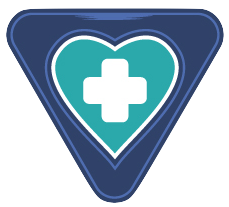Shyness and social anxiety are often conflated, yet they represent two distinct experiences that can cause varying degrees of discomfort in social contexts. Shyness is often viewed as a personality trait—an intrinsic quality that influences how an individual reacts in social scenarios. It manifests as feelings of awkwardness or discomfort when interacting with others, potentially
Mental Health
Narcolepsy, widely recognized for its crippling effects on sleep regulation, goes far beyond merely disrupting a person’s nightly sleep routine. It reveals an intricate tapestry of comorbidities that not only complicate patient care but also profoundly affect quality of life. The presence of challenges such as anxiety and depression among narcolepsy patients is not merely
In recent discussions surrounding Attention Deficit Hyperactivity Disorder (ADHD), a term that has emerged with increasing frequency is “Temporal Lobe Attention Deficit Disorder” (ADD). This concept, however, raises significant red flags due to a lack of scientific backing. While some healthcare professionals and clinics promote the existence of this supposed subtype, the consensus within the
Venlafaxine, famously marketed under the brand name Effexor XR, belongs to a class of medications known as serotonin-norepinephrine reuptake inhibitors (SNRIs). This robust class of drugs plays a crucial role in managing mental health disorders by improving the balance of neurotransmitters in the brain. The efficacy of venlafaxine, particularly as an extended-release (ER) oral capsule,
As the days grow shorter and winter takes hold, many individuals find themselves grappling with a condition known as seasonal depression, clinically referred to as major depressive disorder with a seasonal pattern. More commonly recognized by the acronym SAD, or Seasonal Affective Disorder, this affliction can turn the joy of winter into a struggle for
Bipolar disorder, characterized by extreme mood swings from manic highs to depressive lows, has long been the point of interest within psychological and medical circles. While the mental and emotional symptoms are often emphasized, emerging research suggests that physical indicators, particularly in the eyes, may also offer insights into these mood fluctuations. This exploration into
Obsessive-Compulsive Disorder (OCD) presents a significant challenge for both adolescents and healthcare providers. As one of the most common mental health disorders among teenagers, OCD can disrupt daily functioning and emotional well-being. Traditionally, Selective Serotonin Reuptake Inhibitors (SSRIs) have been the preferred pharmacological treatment for OCD. However, medical professionals are becoming increasingly aware that a
Depression, scientifically known as clinical depression, stands as one of the most prevalent mental health disorders affecting millions across the globe. The landscape of mental health has shifted dramatically in recent years, revealing staggering statistics. According to the National Institute of Mental Health (NIMH), approximately 21 million adults in the United States grappled with at
Perfectionism, described as the relentless pursuit of flawlessness, often presents a paradox when considered alongside ADHD (Attention Deficit Hyperactivity Disorder). While traditional perspectives tend to classify these traits as opposing forces—where the disorganization associated with ADHD seems to contradict the precision sought by perfectionists—emerging research has begun to unveil their complex relationship. Recent studies, particularly
Justice sensitivity refers to the psychological inclination to perceive and react to injustices—both as a victim and as a perpetrator. This dual nature encompasses two significant aspects: victim justice sensitivity, which pertains to how keenly one feels victimized by perceived wrongdoings, and perpetrator justice sensitivity, which reflects awareness and concern for the injustices one might
